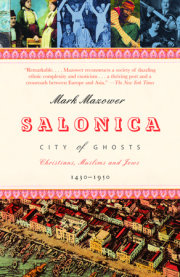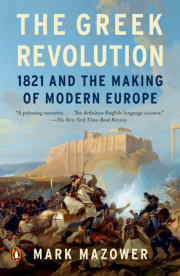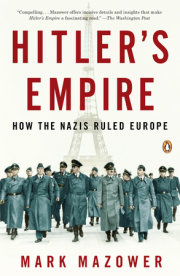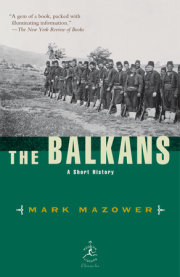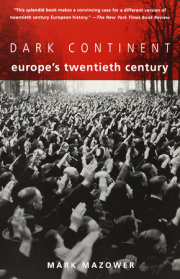Conquest, 1430
Beginnings
Before the city fell in 1430, it had already enjoyed seventeen hundred years of life as a Hellenistic, Roman and Byzantine metropolis. Sometimes it had flourished, at others it was sacked and looted. Foreigners had seized it and moved on. Throughout it remained a city whose inhabitants spoke Greek. But of this Greek past, only traces survived the Ottoman conquest. A few Christian survivors returned and saw their great churches turned into mosques. The Hippodrome, forum and imperial palace fell into ruins which gradually disintegrated and slipped beneath the slowly rising topsoil, leaving an invisible substratum of catacombs, crypts and secret passages. In a very different era, far in the future, archaeologists would assign new values to the statues, columns and sarcophagi they found, and new rulers—after the Ottomans had been defeated in their turn—would use them to reshape and redefine the city once more. One thing, however, always survived as a reminder of its Greek origins, however badly it was battered and butchered by time and strangers, and that was its name.
Salonicco, Selanik, Solun? Salonicha or Salonique? There are at least thirteen medieval variants alone; the city is an indexer’s nightmare and a linguist’s delight. “Is there really a correct pronunciation of Salonika?” wrote an English ex-serviceman in 1941. “At any rate nearly all of us now spell it with a ‘k.’ ” His presumption stirred up a hornet’s nest. “Why Saloneeka, when every man in the last war knew it as Salonika?” responded a certain Mr. Pole from Totteridge. “I disagree with W. Pole,” wrote Captain Vance from Edgware, Middlesex. “Every man in the last war did not know it as Salonika.” Mr. Wilks of Newbury tried to calm matters by helpfully pointing out that in 1937 “by Greek royal decree, Salonika reverted to Thessaloniki.” In fact it had been officially known by the Greek form since the Ottomans were defeated in 1912.1
It is only foreigners who make things difficult for themselves, for the Greek etymology is perfectly straightforward. The daughter of a local ruler, Philip of Macedon, was called Thessaloniki, and the city was named after her: both daughter and city commemorated the triumph (niki) of her father over the people of Thessaly as he extended Macedonian power throughout Greece. Later of course, his son, Alexander, conquered much more distant lands which took him to the limits of the known world. There were prehistoric settlements in the area, but the city itself is a creation of the fourth-century BC Macedonian state.
Today the association between the city and the dynasty is as close as it has ever been. If one walks from the White Tower along the wide seafront promenade which winds southeast along the bay, one quickly encounters a huge statue of Megas Alexandros—Alexander the Great. Mounted on horseback, sword in hand, he looks down along the five-lane highway (also named after him) out of town, towards the airport, the beaches and the weekend resorts of the Chalkidiki peninsula. The statue rises heroically above the acrobatic skateboarders skimming around the pedestal, the toddlers, the stray dogs and the partygoers queuing up for the brightly lit floating discos and bars which now circumnavigate the bay by night. It is a magnet for the hundreds who stroll here in the summer evenings, escaping the stuffy backstreets for the refreshment of the sea breeze as the sun dips behind the mountains.
But in 1992, after the collapse of Yugoslavia led the neighbouring republic of Macedonia to declare its independence, Alexander’s Greek defenders took to the streets in a very different mood. Flags proliferated in shop-windows, and car stickers and airport banners proclaimed that “Macedonia has been, and will always be, Greek.” Greeks and Slavs did battle over the legacy of the Macedonian kings, and Salonica was the centre of the agitation. In the main square, hundreds of thousands of angry protestors were urged on by their Metropolitan, Panayiotatos (His Most Holy) Panteleimon (known to some journalists as His Wildness [Panagriotatos] for the extremism of his language). The twentieth century was ending as it had begun, with an argument over Macedonia, and names themselves had become a political issue in a way which few outside Greece understood.
The irony was that Alexander himself never knew the city named after his half-sister, for it was founded during the succession struggle precipitated by his death. He had a general called Cassander, who was married to Thessaloniki. Cassander hoped to succeed to the Macedonian throne and having murdered Alexander’s mother to get there, he founded a number of cities to re-establish his credentials as a statesman. The one he immodestly named after himself has vanished from the pages of history. But that given his wife’s name in 315 BC came to join Alexandria itself in the network of new Mediterranean ports that would link the Greek world with the trading routes to Asia, India and Africa.
As events would prove, Cassander chose his spot well. Built on the slope running down to the sea from the hills in the shadow of Mount Hortiatis, the city gave its inhabitants an easy and comforting sense of orientation: from earliest times, they could see the Gulf before them with Mount Olympos across the bay in the distance, the forested hills and mountains rising behind them, the well-rivered plains stretching away to the west. Less arid than Athens, less hemmed in than Trieste, the new city blended with its surroundings, marking the point where mountains, rivers and sea met. It guarded the most accessible land route from the Mediterranean up into the Balkans and central Europe, down which came Slavs (in the sixth century), and Germans (in 1941) while traders and NATO convoys (on their way into Kosovo in 1999) went in the other direction. Its crucial position between East and West was also later exploited by the Romans, whose seven-hundred-kilometre lifeline between Italy and Anatolia, the Via Egnatia, it straddled.
Poised between Europe and Asia, the Mediterranean and the Balkans, the interface of two climatic zones brings Salonica highly changeable air pressure throughout the year. Driving winter rains and fogs subdue the spirits, and helped inspire a generation of melancholic modernists in the 1930s. The vicious north wind which blows for days down the Vardar valley has done more damage to the city over the centuries than humans ever managed, whipping up fires and turning them into catastrophes. A bad year can also bring heavy falls of snow, even the occasional ice in the Gulf: freezing temperatures in February 1770 left “many poor lying in the streets dead of cold”; in the 1960s, snowdrifts blocked all traffic between the Upper Town and the streets below. Yet the city also enjoys Mediterranean summers—with relatively little wind, little rain and high daytime temperatures, only slightly softened by the afternoon breeze off the bay.2
This combination of winter rains and summer sunshine makes for intensive cultivation. Apricots, chestnuts and mulberries grow well here, as do grains, potatoes, cucumbers and melons. Fringed now by the Athens motorway, vegetable gardens still flourish in the alluvial plains—“our California,” a farmer once happily told me. “There is excellent shooting in the neighbourhood,” noted John Murray’s Handbook in 1854, “including pheasants, woodcocks, wildfowl etc.” Cutting wide loops through the fields the Vardar river to the west runs low in summer, sinuous and fast in the winter months, too powerful to be easily navigable, debouching finally into the miles of thick reedy insect-plagued marshes which line its mouth. All swamp and water, the Vardar plain in December reminded John Morritt at the end of the eighteenth century of nothing so much as “the dear country from Cambridge to Ely.” For hundreds of years it emanated “putrid fevers,” noxious exhalations and agues which drove horses mad, and manifested themselves—before the age of pesticide—in the “sallow cheeks and bloodless lips” of the city’s inhabitants.3
“From water comes everything” runs the inscription on an Ottoman fountain still preserved in the Upper Town. Fed by rivers and rains and moisture rising from the bay, water bathes the city and its surroundings in a hazy light quite different from that of parched Attica, softer, stranger and less harsh, shading the western mountains in grey, brown and violet. After days of cloudy and stormy weather, the Reverend Henry Fanshawe Tozer realized “what I had never felt before—the pleasure of pale colours.” Artesian wells are dug easily down to the water table which sits just below the surface of the earth, and there are plentiful springs in the nearby hills. Winter rains have etched beds deep into the soil on either side of the town, torrents so quick to flood that well into the nineteenth century they would carry away a horse and rider, or sluice out the poorly buried bones of the dead in the cemeteries beyond the walls.4
From earliest times, too, fresh water has been channelled through fountains, aqueducts and underground pipes, attracting the rich and the holy, plane trees, acacias and monasteries, wherever it bubbles to the surface. Archaeologists have traced the remains of the Roman, Byzantine and Ottoman mills which dotted the water-courses leading down into the city’s reservoirs. Until the 1930s, villagers on nearby Mount Hortiatis produced ice from water-bearing rocks in the thickly forested slopes above the town, kept it in small pits cut into the hillside and brought it down by donkey into the city each summer. With nearby salteries vital for preserving cod and meat, abundant fish in the bay, partridge, hare, rabbits and tortoises in the nearby plain, and oaks, beech and maple in the hills above, it is not surprising that the city flourished.
Romans
A Hellenistic dynasty gave Salonica birth but it was under the Romans that it prospered. Shrines to Macedonian and Roman rulers intermingled with temples to Egyptian gods, sphinxes and the city’s own special tutelary deities, the mysterious Samothracian Kabirii. They were probably worshipped in the Rotonda, the oldest building still in use in the city, whose holy space has since attracted saints, dervishes and devotees of modern art and jazz. Even before the birth of Christ Salonica was a provincial capital with substantial municipal privileges. Later it became the base of Emperor Galerius himself. By the side of the main road running through town the carved pillars of a massive triumphal arch still commemorate Galerius’s defeat of the troublesome Persians. His own urban ambitions, influenced by Syrian and Persian models, were extensive. Today students sun themselves on the walkways above where his now vanished portico once connected the triumphal arch with an enormous palace and hippodrome. Meanwhile, in what is still the commercial heart of the city, archaeologists have uncovered a vast forum, a tribute to Greco-Roman consumerism, with a double colonnade of shops, a square paved in marble, a library and a large brothel, complete with sex toys, private baths and dining-rooms for favoured clients.
This was, in short, a flourishing settlement of key strategic significance for Roman power in the East. We may find it puzzling that Greeks even today will call themselves Romioi (Romans). But there is nothing strange about it. The Roman empire existed here too, among the speakers of Greek, and continued to exert its spell long after it had collapsed in the West. Yet we need to be careful, for when Greeks use the term Romios, they do not exactly mean that they are “Roman.” Hiding inside the word is the one ingredient which has shaped the city’s complex cultural mix more strongly than any other—the Christian faith. The Ottomans understood the term this way as well: when they talked about the “community of Romans” (Rum millet) they meant Orthodox Christians, not necessarily Greeks; Rum was Byzantine Anatolia; Rumeli the Orthodox Christian Balkans. Until the age of ethnic nationalism, to be “Greek” was, for most people in the Ottoman world, synonymous with belief in the Orthodox Christian faith.
With this Christianization of the Roman Greek world few cities are as closely identified as Salonica. In the days when the Apostle Paul passed through, Christians were merely a deviant Jewish sect, and members of the two faiths were buried side by side. By the late fourth century, however, Christianity had triumphed on its own terms and turned itself into a new religion: the Rotonda had been converted from pagan use, and chapels, shrines and Christian graveyards were spreading with astonishing speed across the city.
The figure who came to symbolize Christ’s triumph in Salonica, eventually outshining even the Apostle himself, was a Roman officer called Dimitrios who was martyred in the late third century AD. A small shrine to him was built alongside the many other healing shrines which studded the area around the forum. After a grateful Roman prefect was cured by his miraculous powers, he built a five-aisled basilica to the saint, which quickly became the centre of a major cult, attracting Jews as well as Christians and pagans. The adoration of Dimitrios swept the city, and by the early nineteenth century—the first time we have a name-by-name census of its inhabitants—one in ten Christians there were named after him.5
Like the other major early Christian shrines—the massive, low-sunk Panayia Acheiropoietos (the Virgin’s Church Unmade by Mortal Hands), the grand Ayia Sofia and the Rotonda itself—Dimitrios’s church shows how deeply the city’s Greco-Roman culture had been impregnated with Christian rituals and doctrines. Although the fire of 1917 caused irreparable damage to the priceless mosaics that line its colonnades, enough has remained following its restoration to illuminate the imperial-Christian synthesis: the saint is shown heralded by toga-clad angelic trumpeters, receiving children, or casting his arms around the shoulders of the church’s founders. Another saint, Sergios, is depicted in a purple chiton with military insignia around his neck. The city’s devoted inhabitants are Christians, but they are also recognisably Romans. Incorporated into the church’s structure is part of the original baths, the place of the saint’s martyrdom, which became a site of pilgrimage in the following centuries. And crowning the pillars which line the nave are marble capitals whose writhing volutes and acanthus leaves, doves, rams and eagles, sometimes taken from earlier buildings, sometimes carved specially for the church, cover the entire range of Roman design in the centuries when Christianity began to take hold of the empire. Byzantium is the name we have given to a civilization which regarded itself, and was regarded by those around it, as the heir to the glories of imperial Rome. Its character was defined by its cultural synthesis of the traditions of Greece, Rome and Christianity, and Salonica was one of its bastions.
Copyright © 2005 by Mark Mazower. All rights reserved. No part of this excerpt may be reproduced or reprinted without permission in writing from the publisher.


